If your business aims to meet a regulatory compliance standard, then endpoint protection is an essential tool for getting you where you need to go. Whether it’s HIPPA or NIST, getting certified will require a robust set of cybersecurity tools that protect your network data and users from as many potential cybersecurity threats as possible. Endpoint protection is a tool uniquely positioned to help your business meet multiple regulatory compliance standards, and with the right implementation, it can be a powerful tool that helps you get certified.
Regulatory Compliance Calls for Endpoint Protection

All regulatory compliance standards will require multiple cybersecurity tools to be put in place to protect your network data. For example, NIST requires thorough protection of any part of your IT environment identified as needing security. Small and medium businesses will benefit greatly from endpoint protection because it protects your network endpoints from attacks that come from sources other than the internet. This helps meet compliance because if someone connects a malicious USB drive or uses an attack vector not picked up by your firewall, your endpoint protection service will catch it and begin remediating the threat right away.
Detection and Response Improvements

Along with defending your network, endpoint protection will help cover detection and response requirements for NIST, CMMC, and other regulatory compliance standards. Endpoint protection services can include features like behavioral monitoring and endpoint isolation, which aid your company’s ability to detect and respond to cybersecurity threats as they happen. The ability to gather contextual information relevant to an attack also allows endpoint protection to lower the time it takes to respond to threats. Your IT team will have the data they need to make the best decision for remediation right away, and the ability to respond quickly and efficiently is what compliance standards are looking for.
Recovery with Endpoint Protection and EDR

Another way endpoint protection can help with regulatory compliance is its ability to work with other security tools to create a thorough recovery plan. Specifically, Endpoint Detection and Response (EDR) services will analyze the information your endpoint protection gathers on a successful attack and provide your IT team the data they need to know if the effects of an attack have been completely removed from the network. EDR’s ability to respond to cyberattacks and gather information on its causes make it a standard with cyber insurance companies, so it can certainly play a key role in your business’ recovery plan should a successful attack happen.
Summary
While endpoint protection won’t be the only service your business needs to meet necessary regulatory compliance standards, it can certainly be a key piece of the puzzle. To get the right endpoint protection and further develop your plan to meet compliance, you may need the right IT consulting as well, and we want to help. Our security specialists here at Robinett Consulting can help you couple endpoint protection with everything else you need to meet the certification you’re aiming for.




